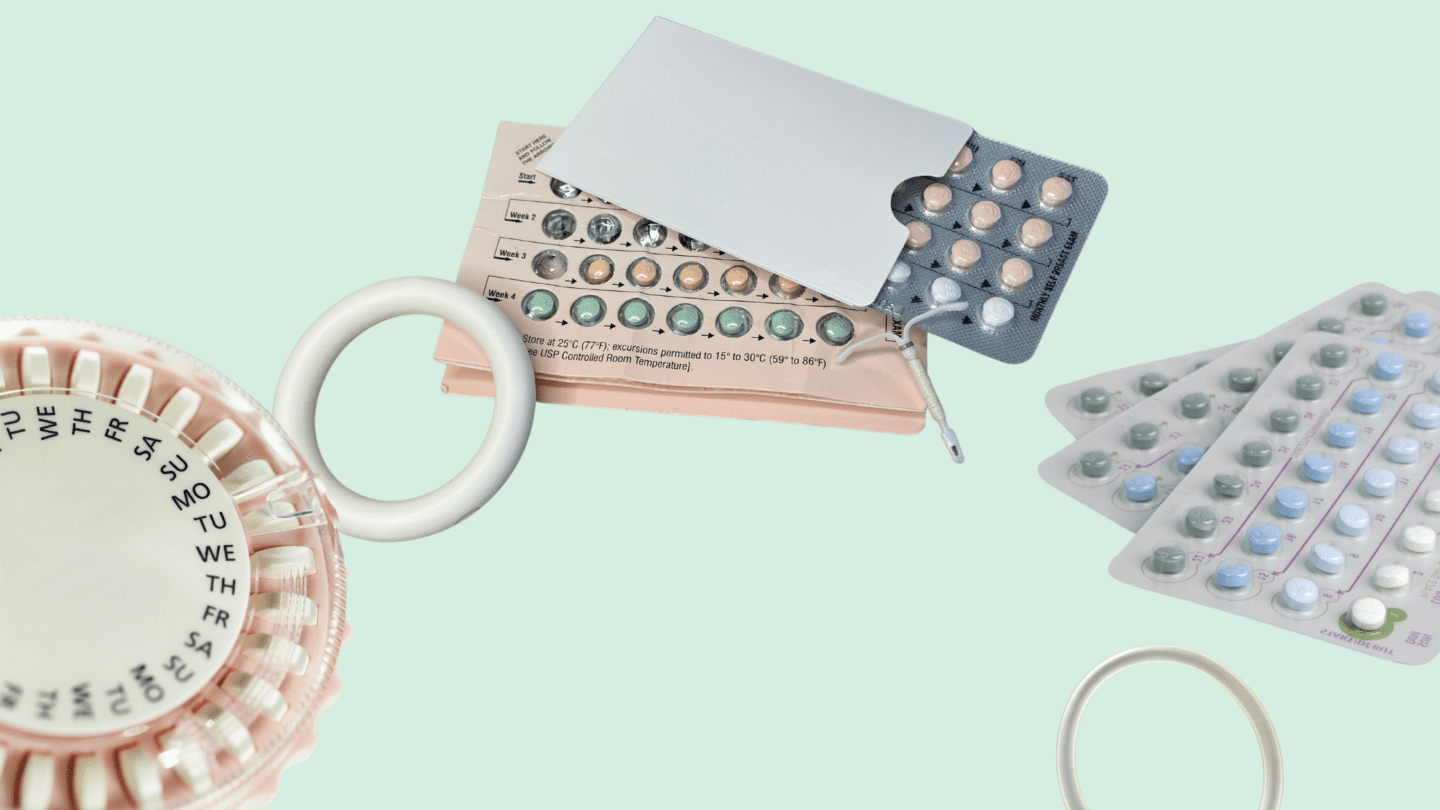In the United States, 65% of women aged 15–49 use 1 – that’s a staggering 49 million people.
At some point, each of those 49M people has gone through the complicated process of choosing a option – some with more success than others. With 200+ products on the market in the US, how do you know you’re choosing the best option for you?
Ideally, your doctor uses all the evidence they have to select the right option for your biology and goals. But in practice, this doesn’t always happen. This leads to people relying on trial and error, their personal networks, online quizzes, internet searches, and a lot of guess and check.
What if there was a better way? Below we’ll talk about the approaches you might already be familiar with, their limitations, and how precision medicine, through solutions like adyn, is revolutionizing the way you choose your .
Here’s a comprehensive overview of all the options.
What you may be familiar with
Talking to your doctor
Currently, the standard of care for prescribing is the CDC Medical Eligibility Criteria for Contraceptive Use.² Basically, these criteria entail a series of questions that lead to a recommended .
This is often combined with a trial-and-error approach during which your doctor will start you on a method, and if you experience side effects, you can then switch to a new method until you find a better fit.
3-4 years after CDC guidelines were released, fewer than 60% of doctors actually followed them.³
This approach can work. If you’re really lucky, you will find the right method for you on the first try. However, CDC data shows that <6% of users get that lucky.⁴ You are much more likely to be part of the 51% of women who have tried 4+ methods of .⁴
In this case, you could be dealing with months – or years – of unwanted side effects in order to find a method that does work.
Doing your own research
You may be familiar with websites that offer quizzes that claim to help you navigate your options. These can give you a helpful starting point but they are not evidence-based (ie. based on science or scientific data). Not to mention, different quizzes don’t always lead to the same answer: one quiz may tell you the patch is your best option, while another may recommend the IUD.
Another way to choose your method is to get advice from the people you trust, like friends and family. It’s common to ask the people you know and love (or even strangers on the internet) about their experiences on certain methods.
The downfall to this approach is that we are all biologically unique. Biological differences are why you and your best friend can use the same and have completely opposite experiences. Some options are simply not a good fit for your body.
A good way to think about it is in terms of food intolerance or allergies. Take peanuts, for example.
Some people enjoy peanut products on a daily basis, but for others, consuming peanuts can cause a wide range of unwanted symptoms.⁵ In some it can cause mild symptoms such as a runny nose, in others it can cause more bothersome symptoms like hives and itchiness, abdominal pain, and in some it can cause a reaction so severe it can lead to death if not treated immediately.
Why does the same exposure to peanuts lead to such different reactions? While scientists don’t know exactly why this happens, they do know that it’s due to individual differences in our biology⁵ and environment, including genetic differences.
Like what you’re reading? Get the latest straight to your inbox 💌
A very real and dangerous known example of how this applies to birth control selection can be seen with blood clots. Some methods, in particular those containing an taken orally, can raise the chances for a blood clot. If a person already has a genetic predisposition to form blood clots (in other words, their is coded in such a way that increases this risk) taking the wrong kind of can greatly raise the chance of blood clots.⁶ That same method, though, can be completely safe for someone else.
Other severe side effects, such as cramps, bleeding, weight gain, depression, and worsened PMS, can occur for some people using certain options but not to others.
Is there a better way to choose my ?
Yes! At adyn, we’re making selection more personalized and evidence-based. What this means is we consider your unique biology to help you choose the best for your body. Making this whole process easier for both you and your provider.
If you’re a physician who prescribes , we’d love to hear from you.
The Birth Control Test considers your genetic and endocrine () data, medical history, and reproductive health goals to match you with your ideal . You’ll provide a blood sample for measuring hormones and a saliva sample for your . We analyze these samples in CLIA-certified, CAP-accredited, HIPAA-compliant partner labs (AKA the very best labs out there).
Once your samples are analyzed, you’ll receive your Birth Control Test Results: a personalized report that gets into all the options – what are good options for you and what you should stay away from. The insights shared in this report are medically actionable, meaning you can take actions (like choosing your ) that will have an impact on your healthcare.
After receiving your Birth Control Test Results, you’re invited to schedule a virtual care visit with a licensed medical provider who can talk you through your results and ultimately help you choose your method. This visit is 25 minutes – double the duration of the average contraceptive counseling visit in the US (a mere 13 minutes).⁷
Is adyn right for you? Take the quiz.
This process is driven by science and data – the exact opposite of the trial-and-error approach that has made selection such a miserable experience for so many people.
And by the way, it works:
- Patient satisfaction on their selected prescription is 90% with adyn, vs. 6% without adyn⁴
- 94% of patients switch prescription based on what they learn with adyn
- 70% of people learned of a medical risk that impacted their selection
This works because the best is the one that works best for you.
One of our customers documented her own experience with The Birth Control Test, from process to results.
Ready to choose your with science? Get started with The Birth Control Test.
-
- Daniels K, Abma JC. Current contraceptive status among women aged 15–49: United States, 2017–2019. NCHS Data Brief, no 388. Hyattsville, MD: National Center for Health Statistics. 2020.
- Nguyen AT, Curtis KM, Tepper NK, et al. U.S. Medical Eligibility Criteria for Contraceptive Use, 2024. MMWR Recomm Rep 2024;73(No. RR-4):1–126. DOI: http://dx.doi.org/10.15585/mmwr.rr7304a1.
- Zapata, L. B., Morgan, I. A., Curtis, K. M., Folger, S. G., & Whiteman, M. K. (2019). Changes in US health care provider attitudes related to contraceptive safety before and after the release of National Guidance. Contraception, 100(5), 413–419. https://doi.org/10.1016/j.contraception.2019.07.142
- Daniels K, Mosher WD, Jones J. Contraceptive methods women have ever used: United States, 1982–2010. National health statistics reports; no 62. Hyattsville, MD: National Center for Health Statistics. 2013.
- Asai, Y. et al. Genome-wide association study and meta-analysis in multiple populations identifies new loci for peanut allergy and establishes C11orf30/EMSY as a genetic risk factor for food allergy. J Allergy Clin Immun 141, 991–1001 (2018).
- Mohllajee, A. P., Curtis, K. M., Martins, S. L. & Peterson, H. B. Does use of hormonal contraceptives among women with thrombogenic mutations increase their risk of venous thromboembolism? A systematic review. Contraception 73, 166–178 (2006).
- Madden, T., Mullersman, J. L., Omvig, K. J., Secura, G. M., & Peipert, J. F. (2013). Structured contraceptive counseling provided by the Contraceptive CHOICE Project. Contraception, 88(2), 243–249. https://doi.org/10.1016/j.contraception.2012.07.015






